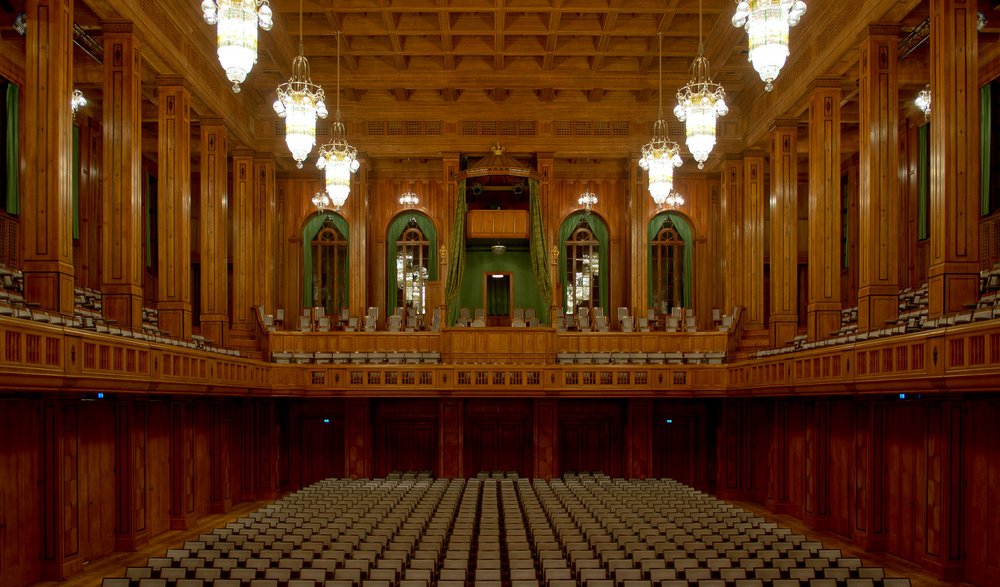
Tour: Mendelssohn Hensel, Beethoven, Brahms
J. Fischer, Fischer
Program
Featuring
Other information
The event is about 2.5 hours long.
About the event
The Budapest Festival Orchestra will conclude its guest tour in Bad Kissingen with a vibrant and colorful program. The concert will open with a choral work by Fanny Mendelssohn, a talented member of the Mendelssohn family who remained unrecognized, as orchestra members are keen a cappella singers and committed to the oeuvre of rarely performed composers. After the orchestra musicians, Gramophone Award-winning Julia Fischer’s violin from 1742 will take center stage. The soloist for Beethoven’s lone, grand violin concerto is not only a violinist: she is also a pianist, a quartet player, an instructor and the founder of a youth orchestra. As a reviewer wrote, “She has a pure tone, impeccable intonation, and immaculate technique, but she also has a warm heart and a radiant soul”. The concert will be concluded by the serene symphony of Johannes Brahms, written when he had finally stepped out from Beethoven’s shadow.
Fanny Hensel or, as most people know her by her maiden name, Fanny Mendelssohn, in keeping with the customs of the times, should not have been able to practice her greatest passion; her incredible talent, however, allowed her to break through, and she became a prominent female composer. Her cycle Gartenlieder (Garden Songs), composed in 1846, includes six choral works for mixed choir. The poem set to music in the fourth movement of the series was written by Fanny’s husband, Wilhelm Hensel. The work tells the story of light, as it rids us of the darkness and dread of night; the beauty of nature, quiet, but very much active; and love. The music, appropriately, is vibrant, sparkling and joyous.
Although he had previously composed for violin and orchestra, the only work in Beethoven's oeuvre that is called a violin concerto is Op. 61. The piece – like many other well-known violin concertos – was written in D major, perhaps the most comfortable key for this solo instrument, and is 45 minutes in length, taking up an entire half of a concert. This key is so closely associated with the violin that although the composer, who was primarily a pianist, rewrote the work as a piano concerto, only the original version was successful. Audiences were enthusiastic at the 1806 premiere. However, critics were more cautious about the piece, calling it too innovative.The opening night took place without an orchestral rehearsal, Franz Clement, for whom the concerto was written, sight-read the solo part at the premiere because Beethoven was late finishing the solo part. This famous violinist not only set the date for the premiere, but also kept visiting the composer to check if the work was progressing well. With musical obstacles demanding great technical expertise and its deeply sensual lyricism, the piece is doubly challenging for the violinist. The first movement in sonata form, unusually beginning with four drum beats, is followed by a slow movement with variations and then a rondo finale conjuring up a hunting scene.
It took Brahms about fifteen years to find his own symphonic voice after Beethoven’s Ninth. In contrast to that dramatic struggle and dramatic achievement, the Second Symphony flowed almost effortlessly from the composer’s hands: the score was completed during a single summer. The tranquility of the beautiful Wörthersee, where the work was composed, is echoed in the music: instead of the earlier pain and struggle, here a pastoral mood prevails. Light and darkness, lyricism and power, intimacy and openness converge in the piece, which is built from the three-note motif introduced in the bass at the opening of the first movement. The slow movement introduced by the cello brings a few clouds, but the oboe solo over a plucked accompaniment banishes them in the third movement. The finale is among Brahms's most unbridled expressions in music.